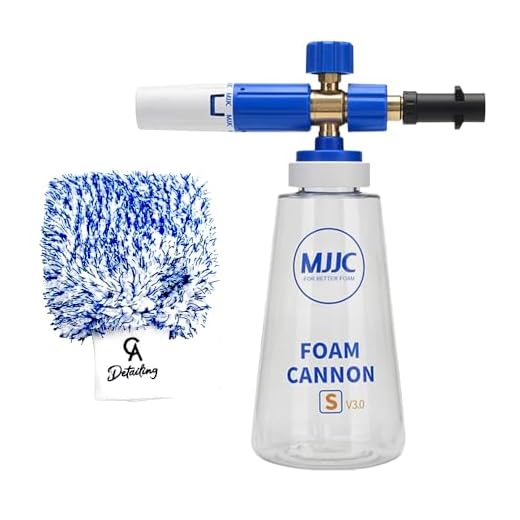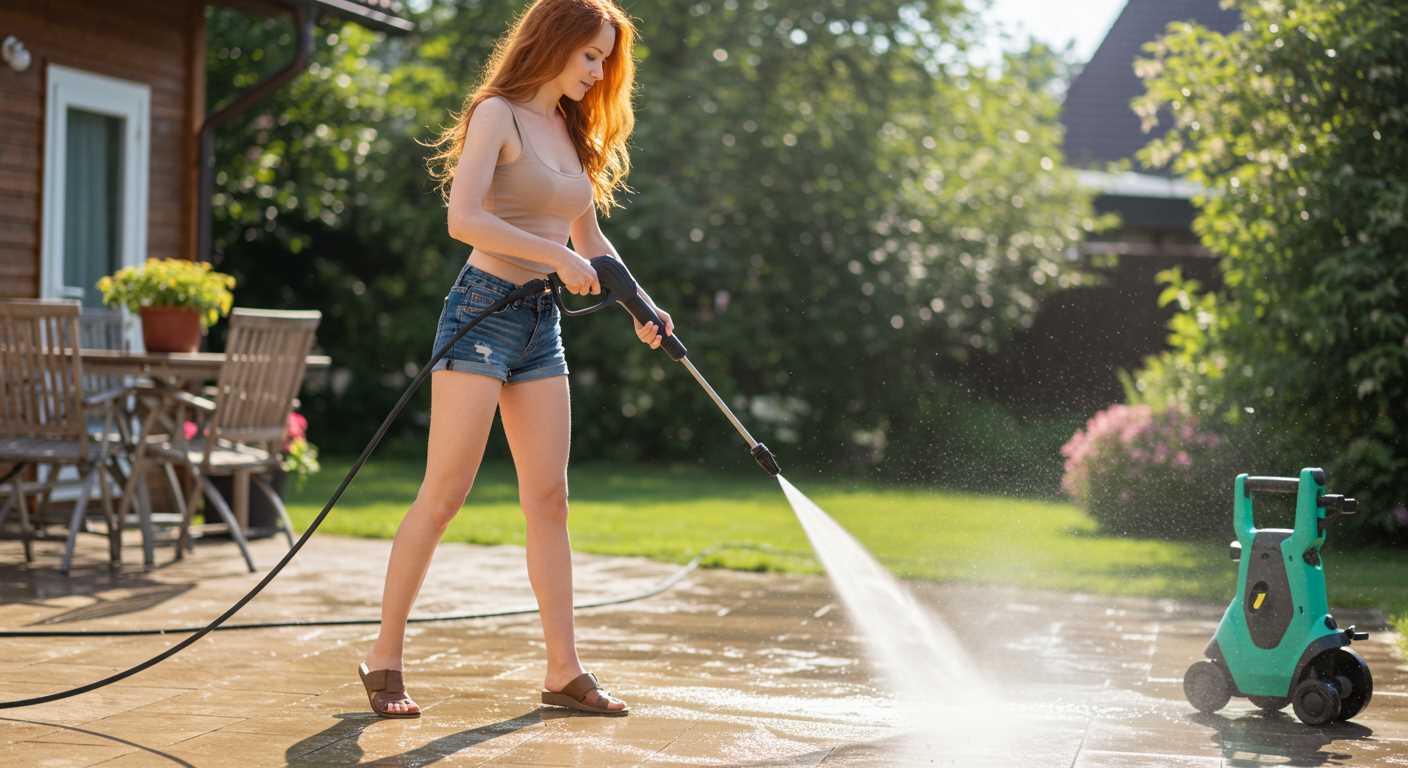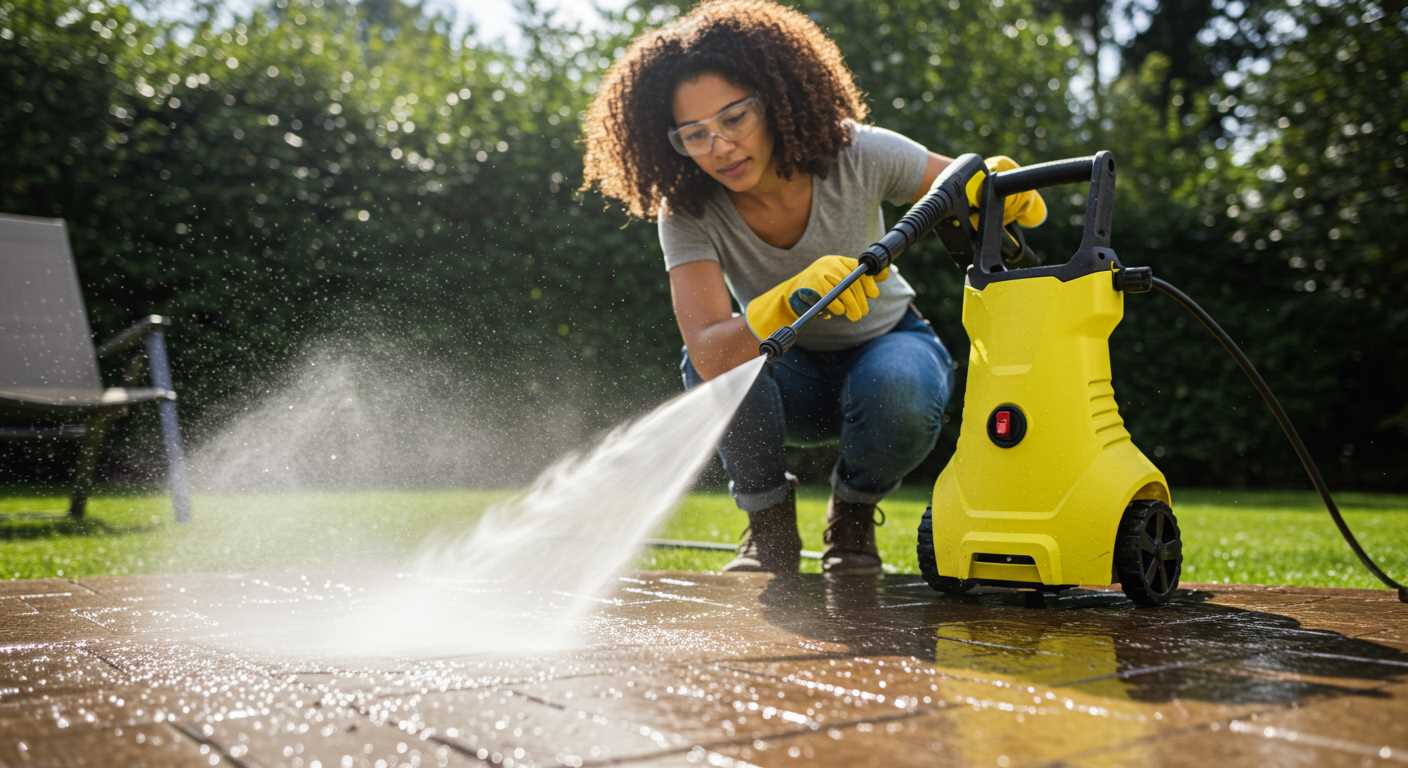



For an effective clean, expect to use around 0.5 to 1 litre of cleaning solution per 10 square metres. Adjust the mixture according to the task; tougher grime may require a higher concentration, while lighter cleaning can be achieved with a diluted solution.
When working with a machine that incorporates a detergent tank, follow the manufacturer’s recommendations for optimal results. Usually, these devices will dispense the cleaner as you work, ensuring even application while conserving the liquid.
Using a foam cannon can enhance application efficiency. Typical foaming solutions utilize roughly 1 cup (approximately 240 ml) per use, providing ample coverage for vehicles and surfaces alike. Always rinse thoroughly to avoid residue.
Some brands have unique formulations that yield better effectiveness in various conditions. Experimenting with the appropriate types can lead to superior outcomes, especially when targeting specific surfaces or stains.
Amount of Cleaning Solution Required
.jpg)
For optimal results, I recommend a dilution ratio between 1:4 and 1:10, depending on the concentration of the cleaning agent and the specific grime you’re tackling. A high concentration, around 1:4, is suitable for heavy stains or oil, while a more diluted mix, like 1:10, works well for general cleaning.
Most systems draw the solution through a siphon, consuming approximately 0.5 to 1 litre per hour of operation. Therefore, if cleaning for an extended period, calculate your needs accordingly. For example, a 5-litre container should suffice for about 5 to 10 hours of work, depending on the set dilution.
Make sure to always consult the manufacturer’s guidelines on any given product for specific recommendations related to dilution and compatibility, as different machines may have varying requirements. Using too much can lead to residue left behind, while too little may not yield the desired cleanliness.
Mixing solution directly in the tank is usually not recommended; instead, prepare the appropriate amount in a separate container to ensure accurate ratios. Having a measuring cup on hand simplifies the process and guarantees consistency.
Understanding Detergent Types for Pressure Washers

The right formulation is key for a successful clean. For optimum results, select a product specifically designed for your equipment type. Here’s a breakdown of the common formulations:
| Type | Usage | Recommended For |
|---|---|---|
| Alkaline Solutions | Excellent for breaking down grease and heavy soils. | Concrete surfaces and machinery. |
| Acidic Cleaners | Highly effective against rust and mineral deposits. | Metal surfaces and removing hard water stains. |
| Bio-based Cleaners | Eco-friendly and safe for the environment. | All surfaces, especially for sensitive areas. |
| Soap Solutions | Good for general cleaning tasks. | Cars, patios, and outdoor furniture. |
Always check the manufacturer’s guidelines to ensure compatibility with your device. Certain types may damage seals or internal components if misused. For best performance, use a low-pressure setting when applying a solution, allowing it to dwell before rinsing off. This approach can greatly enhance cleaning efficiency, ensuring surfaces are both clean and undamaged.
For tougher jobs, consider mixing different types to address specific cleanliness challenges. However, be cautious; not all combinations yield better results, and some may create harmful reactions. Testing a small area first is a prudent step. By knowing the right type for your needs, you’ll achieve effective cleaning while extending the life of your machine.
Factors Influencing Consumption of Cleaning Solutions
Optimal application quantity hinges on several key factors. I’ve observed these elements consistently during my years in the field and tested a variety of cleaning machines.
Surface Type
- Porosity: Highly porous surfaces such as concrete absorb cleaning agents more effectively, requiring increased volumes. Smooth surfaces like glass or metal typically need less.
- Soiling Level: Heavily soiled areas necessitate more product compared to lightly caked dirt. Understand the condition before deciding on the amount.
Machine Specifications
- Nozzle Selection: Angled or wider spray nozzles affect how the solution adheres to surfaces; this can alter consumption rates.
- Water Pressure: Machines operating at higher pressures can often dilute solutions more effectively, reducing the total volume needed for optimal results.
Pay attention to the manufacturer’s guidelines. Each model can have specific recommendations that optimise the use of formulation. Be mindful that your cleaning approach can substantially influence the amount required to achieve desired outcomes.
Measuring Detergent for Different Pressure Washing Tasks
For optimal results, the quantity of soap required varies based on the cleaning task. Here are specific guidelines:
- General Cleaning: For surfaces like patios or driveways, 50-100 ml of cleaning agent per litre of water is sufficient.
- Automobiles: Typically, 100-150 ml mixed with 3-4 litres of water is recommended for thorough washing without residue.
- Decks and Fences: A solution of 75-125 ml per litre is advisable, ensuring proper penetration into wood grain.
- Walls and Exteriors: Use around 100-200 ml per litre to achieve a thorough clean on brick or siding.
- Environmentally Sensitive Areas: Reduce dosage to 25-50 ml per litre, prioritising eco-friendly options when necessary.
ROI significantly improves when applying the right concentration. Always measure precisely and adjust according to product specifications for achieving superior results.
Consider these factors affecting the required volume:
- Surface Type: Porous materials demand more to penetrate effectively.
- Soil Level: Heavier grime may require an increased quantity.
- Application Method: Using a foam cannon typically needs a higher concentration than direct attachment.
Always test a small area first, particularly with delicate surfaces, to avoid potential damage. Adjust amounts as necessary, and always refer to the manufacturer’s guidelines for the best outcomes.
Setting Up Your Pressure Washer for Optimal Detergent Use

Adjust the siphoning rate according to the specific cleaning task. Most models allow for settings that dictate how quickly the solution is drawn in. For tougher grime, setting it to a higher rate is advisable, while for light cleaning, reduce it to conserve the mixture.
Use a dedicated solution reservoir instead of mixing cleaners directly in the tank. This approach prevents clogs and keeps the components functional. Ensure the tank is clean and free from residue before adding your formula.
Check your nozzle selection; the correct size and type can impact how well the cleaning agent is distributed. A wider angle nozzle can help cover more area without over-saturating any particular spot.
Consider the application method. Applying the cleaner in a low-pressure setting allows it to dwell on the surfaces for better penetration, especially with stubborn stains. Letting the solution sit for the recommended time increases its efficacy.
Maintain consistent maintenance on your equipment to ensure optimal performance. Examine the hoses, connections, and filters regularly. Any blockages or wear can hinder the proper intake of your cleaning solutions.
Be conscious of the environmental conditions; temperature and surface materials can affect how cleaning agents perform. Warmer surfaces may require different settings for maximum effectiveness, so adjust accordingly.
It can be beneficial to test a small area before widespread application. This trial will help you gauge how well the cleaner works with your machine and the surface being treated.
Common Mistakes in Cleaning Agent Application for High-Pressure Cleaners
Applying the wrong concentration is a frequent error. Always adhere to the manufacturer’s guidelines regarding dilution rates. Too strong can damage surfaces, while too weak may not clean effectively.
Another mistake is using unsuitable cleaning solutions. Verify that the cleaner is appropriate for the job at hand. For example, certain formulations might not be safe for painted surfaces or delicate materials.
Incorrect Application Techniques
Many users apply the solution directly from the container without mixing it correctly, leading to uneven distribution. Pre-soaking heavily soiled areas can enhance efficacy when the solution is allowed to dwell for a few minutes before rinsing.
Using the wrong nozzle can also hinder performance. The wrong spray pattern can waste material and leave streaks. A fan nozzle is typically preferred for applying solution, while a narrow stream is better for rinsing.
Neglecting Maintenance
Failing to clean the siphon tube and filter can obstruct flow and reduce effectiveness over time. Regular checks can prevent this issue. Additionally, expired products can lose their cleaning power, so keep an eye on dates and storage conditions.
Tips for Reducing Detergent Waste During Cleaning

Start by diluting the cleaning solution according to the manufacturer’s recommendations; this ensures you’re not using more than necessary. I’ve observed that many tend to over-concentrate their liquids, leading to wastage.
Use a foamer attachment. By using an adjustable nozzle that creates foam, I’ve noticed a significant reduction in liquid consumption, as foam adheres better to surfaces and allows for more efficient cleaning.
Conduct a test patch. Before applying the solution widely, test on a small area to determine the effectiveness, adjusting the ratio if needed. This way, you avoid excessive application on the entire surface.
Only apply to areas that need it. Assess the surface condition beforehand. I’ve often seen people apply aggressively even on lightly soiled areas, which is unnecessary.
Limit your coverage area per application. Work in smaller sections, allowing for better control over liquid usage. This practice prevents waste from oversaturation and allows you to focus on effectiveness.
Maintain your gear. A clean machine ensures optimal performance, reducing the likelihood of needing extra applications due to inefficiency. I routinely check filters and nozzles to keep everything in top condition.
Consider timing. Applying your solution during cooler parts of the day can help it work better without evaporating quickly, making it easier to achieve desired results without extra applications.
Finally, clean your equipment after use. Residue can cause issues down the line, leading to unnecessary product usage in future cleanings. Rinsing properly eliminates buildup and promotes longevity.









